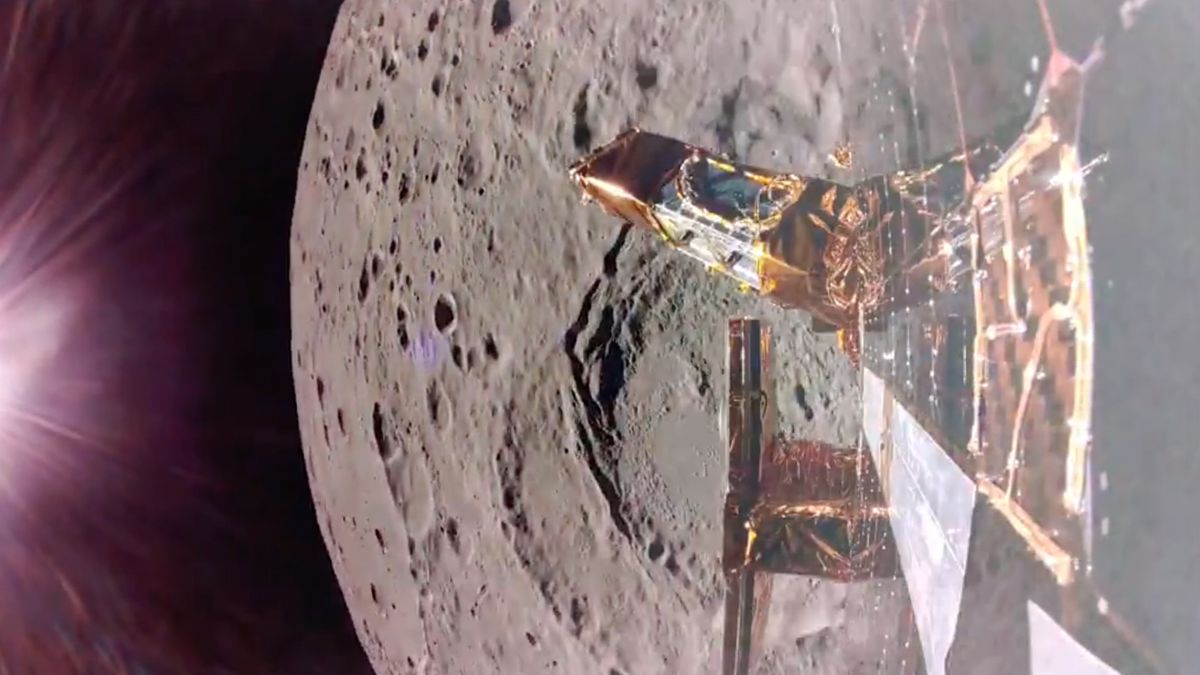ARTICLE AD BOX

WASHINGTON — A missile-tracking satellite developed by L3Harris Technologies demonstrated its ability to track hypersonic missiles from space, giving the defense contractor a potential key advantage in the Golden Dome program directed by the Trump administration to bolster U.S. defenses against advanced aerial threats.
The Missile Defense Agency (MDA) confirmed April 25 that L3Harris’ Hypersonic and Ballistic Tracking Space Sensor (HBTSS) satellite prototype met performance targets in tests. The agency launched two competing HBTSS demonstration satellites in February 2024 — one built by L3Harris and another by Northrop Grumman — but only the L3Harris satellite has satisfied program requirements, according to an MDA spokesperson.
“While a full assessment of proven payload performance has not yet been concluded, MDA can confirm that the L3Harris satellite is successfully demonstrating its primary functions,” the spokesperson told SpaceNews. “The Northrop Grumman satellite failed to meet established requirements.”
MDA awarded Northrop Grumman a $155 million contract and L3Harris a $121 million contract in January 2021 to develop HBTSS prototype satellites for the demonstration.
“We were pleased to partner with both L3Harris and Northrop Grumman on this important homeland missile defense capability and look forward to working with them in the future,” the MDA spokesperson said. “The rapid prototype process was designed for a fair but difficult challenge for the industry members involved … This entire effort represents a great lesson learned in the success and effectiveness of the rapid prototype process.”
EO calls for ‘acceleration’ of HBTSS
HBTSS is seen as a cornerstone technology in the Golden Dome program — a missile defense initiative launched by the Trump administration and formalized through executive order. The directive calls for the “acceleration of the deployment of the Hypersonic and Ballistic Tracking Space Sensor layer” as part of a broader strategy to protect the U.S. against missile and aerial threats.
The HBTSS sensor is designed to track fast, low-flying hypersonic weapons that can maneuver unpredictably in the atmosphere — a significant challenge for traditional radar and satellite systems. Unlike ballistic missiles that follow predictable arcs, hypersonics require real-time, high-fidelity tracking data to enable interception.
L3Harris says its satellite delivers “fire-control quality” tracking — a term used to describe data precise and timely enough to guide interceptor missiles to their targets. The system’s sensors are engineered to maintain persistent surveillance from low Earth orbit, handing off critical targeting data to ground-based defense systems.
Although MDA has not announced plans to award a follow-on contract, L3Harris says it is ready to move into production.
“We have the only proven satellite in orbit that works,” L3Harris CEO Christopher Kubasik said April 24 during a first-quarter earnings call. “If we can get an order here quickly, we can have the U.S. covered while the President is still in office.”
L3Harris recently announced it has expanded its satellite manufacturing capacity to support the Golden Dome program. The company estimates about 40 HBTSS satellites would be needed to establish global coverage.
Ed Zoiss, president of space and airborne systems at L3Harris, told SpaceNews that five HBTSS sensors have been built to date — one for the Missile Defense Agency and four for the Space Development Agency (SDA), which is building a layered constellation known as the Proliferated Warfighter Space Architecture, or PWSA.
HBTSS satellites feature medium-field-of-view sensors which, when cued by other wide-field-of-view PWSA satellites or ground sensors, would focus on specific threats and deliver high-precision, weapons-quality tracking data to ground-based interceptors.
Sandra Erwin writes about military space programs, policy, technology and the industry that supports this sector. She has covered the military, the Pentagon, Congress and the defense industry for nearly two decades as editor of NDIA’s National Defense... More by Sandra Erwin

 9 hours ago
3
9 hours ago
3









 English (US) ·
English (US) ·